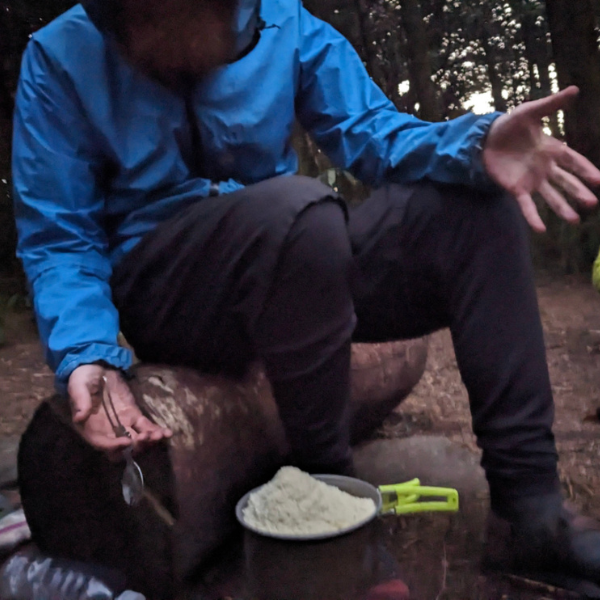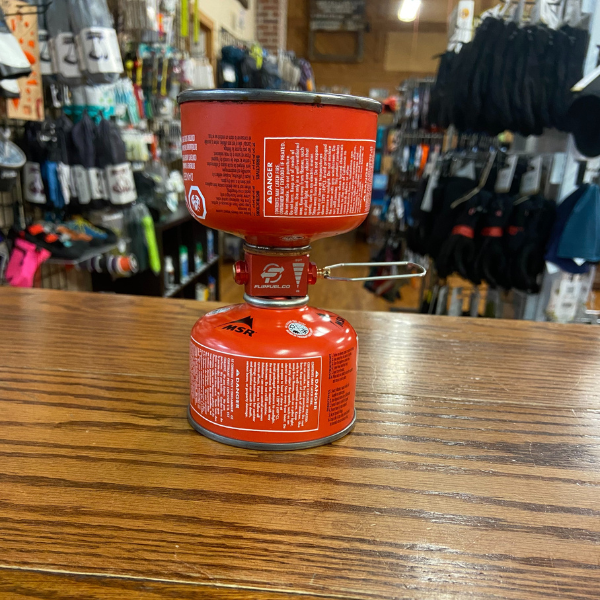Posted by By Ian “Tarzan of the Grapes” Gorley on Jan 11th 2024
Ultra-Cheap Backpacking: 5 Easy Ways to Save Money in the Backcountry
Let’s face it, adventure can be expensive. There’s highly-specialized gear to buy, travel expenses, food to resupply (especially once hiker hunger has set in), and there may even be parking and hiking permits for the places you’d like to go. Unfortunately, the added cost of all of these things can be a barrier to entry for some incredible, life changing experiences for those of us on a budget. Luckily, there are many ways to drastically reduce the cost of some backcountry necessities without reducing any of the thrill or excitement that comes with spending time outdoors. Here are five money-saving tips that I’ve found particularly helpful on some of my own adventures.
- Travel with a buddy.
There’s definitely something to be said for solitude, but aren’t some of the best adventures made even better by having someone equally crazy to share them with? When you bring a friend or loved one (or two, or three) hiking with you, they won’t just share the memories and sights – they’ll also share in the cost. Staying at a hostel? Split a room. Resupplying food? Buy in bulk and divide it up. Worried about gas prices? Take turns driving and refueling. Just make sure whomever you hike with doesn’t have any unresolved grudges against you – you will be alone in the wilderness, after all.
2. Buy gear according to your preferences.
If you spend any time watching hiking videos on YouTube or TikTok, you’ve definitely seen experienced hikers showing off gear items that every outdoor enthusiast must have. They’ve got the latest quality features, built-in protection from every conceivable type of weather, are lighter than a single sheet of paper, and come at the price of your entire monthly paycheck. Look, I’m not knocking premium gear – there’s some awesome stuff out there! – but high-priced endorsements from experienced adventurers can make an ultra-cheap hiker feel a little overwhelmed.
But here’s the thing: the bestgear for one person isn’t necessarily the best gear for you. To determine what that is, you need to get in touch with your personal gear preferences. Start by making a list of what you look for in outdoor gear. How important is comfort to you? Are you more sensitive to heat or cold? Do you need a large tent or pack to fit all of your items, or would a smaller model suit you better? Is UV protection a concern? Once you’ve determined what you prefer, start looking for gear that checks all of your boxes and doesn’t require you to pay extra for features you don’t need. What you end up buying may not be the most popular gear on the market, but to you, it will be gold.

3. Embrace the “struggle meal.”
Let’s make one thing clear: saving money on food by eating less is NOT the way to go. You could maybe get away with that on a day trip, but if you’re hiking for more than a couple of days, chances are you’re operating at a caloric deficit. Your body needs more calories than usual to maintain that level of daily activity, or you run the risk of bonking out and cutting your trek short.
Freeze-dried meals are tasty, simple, and calorie-dense, but eat them every day and the cost can add up fast. This is where the struggle meal comes in; you know, the type of stuff you used to prepare for yourself when you were in college, or back from a long day of work, and didn’t have the time, money, or energy to make anything fancy. Many cheap foods come with the calories you need for a long day of hiking, and are surprisingly versatile. You can put anything in a cup of ramen noodles, from inexpensive packets of chicken, to dried vegetables, to even peanut butter (it’s actually not half bad!). Ditto for tortillas, an easy way to add carbs to any meal or snack. Make your own trail mix by keeping an ever-changing rotation of nuts, dried fruit, candy, or whatever catches your eye. Instant mashed potatoes pack a lot of flavor for little effort, and packs of Velveeta cheese are surprisingly caloric and savory. Some of my best hiking memories involve cheffing up struggle meals at camp with my buddies, inventing and sharing new recipes. Just don’t forget to be creative!
(An alternative tip: if the trail you hike has access to a post office, consider making your own freeze-dried meals ahead of time and having them sent to you!)
4. Don’t skimp on footwear.
This may sound counter-productive, but think about it. When backpacking, if you’re not sleeping, you’re probably on your feet. Things can go south fast if you don’t take proper care of them. The best way to keep your feet healthy and unhurt is to invest in a reliable pair of hiking shoes. Try to hike in suboptimal shoes, and you may find yourself scrambling to get a ride into town to find a replacement pair ASAP – a series of events that’ll cost you much more than if you had just bought a better pair of shoes in the first place. Of course, finding a good pair of shoes means finding a good pair of shoes for you, which goes back to knowing your preferences. But when you do find it, don’t be put off if the price is a little higher than you had hoped; a quality pair of hiking shoes is an investment that returns itself many times over.
5. Reuse fuel cans whenever possible.
This is a trick I learned on the AT. If you use a gas cook stove, you’ll need to replenish your fuel supply every so often. Usually this means buying a new fuel can, but it doesn’t always have to. FlipFuel makes a lightweight, relatively inexpensive implement that allows you to transfer gas from one can to another. So, if you’re hiking a trail that has access to hostels or gear shops (many of which have hiker boxes where previous hikers may dump half-spent fuel cans), a FlipFuel device can seriously reduce the number of times you need to buy new gas. And it’s really simple to use (just be sure to read the instructions)!

It isn’t always easy to have fun on a budget, but a savvy ultra-cheap backpacker can make adventures happen without putting too big a dent in their wallet. How do you save money outdoors? Let us know at RoadsRiversAndTrails@rrt.com, or stop on by and share your adventures and advice with us.

